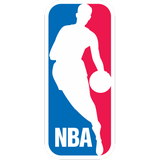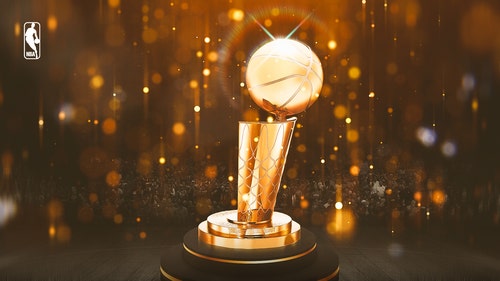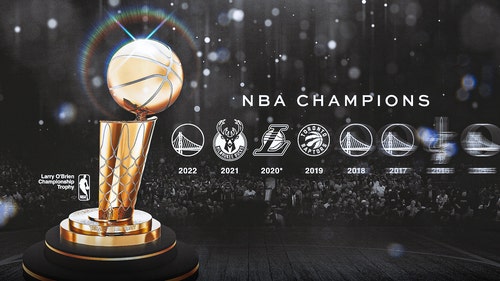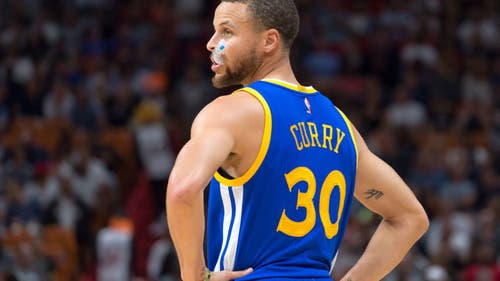
Lakers don't look playoff-ready
GAME TIME: Hawks 109, Lakers 92
Even before this pitiful performance in Atlanta, the Lakers felt they had nothing to prove and nowhere to move. They were still the reigning champs until somebody beat them, and with the end of the regular season in sight, there was no way they could catch the Cavs.
Still, while the hard-driving Hawks took full advantage of their visitor’s lethargic play, the Lakers were solely responsible for embarrassing themselves.
OFFENSE
Kobe looked for his shot from the get-go. On the three possessions when he faithfully executed the triangle, he wound up with open 15-footers — making two and missing one. Otherwise, he mostly planted himself in the low post and demanded the ball — or else he went through his razzle-dazzle dance-and-shoot repertoire whenever he caught the ball up-top or on a wing.
As a result, Kobe took more than twice as many shots as any of his teammates — 21 to Pau Gasol’s 10 — hoisted four of the ugliest bricks since cement was invented, was only 2-for-6 from the stripe, and passed only when he was unable to see the rim. On one third-quarter sequence, Gasol was so surprised when Kobe noticed that he was alone under the basket that he fumbled the incoming pass.
Gasol, meanwhile, was grumbling at several other teammates for not giving him the ball in the low post.
Lamar Odom jacked up a number of quickies and missed a bunch of layups, and was whistled for camping out in the paint.
Derek Fisher played like he was the only one who knew that he’d already retired. Ron Artest banged around and was actually the Lakers' most alert passer.
Off the bench, Jordan Farmar made numerous mistakes with the ball, but rescued his stat line by burying a bunch of too-late treys.
Shannon Brown dunked a breakaway and, given what else he contributed, should have continued fast breaking to the locker room.
All game long, the Lakers were careless, listless, and obviously upset with each other.
It was so bad that with less than five minutes remaining in the game Phil Jackson couldn’t bear to watch. As the Lakers wearily carried the ball into what is supposed to be the attack zone, Jackson was busily studying his fingernails, perhaps contemplating his next manicure.
For sure, the Hawks played some rousing defense — jamming the middle, and haunting the passing lanes — but the defending champs offered minimal resistance. Instead of forcing the issue by driving the ball into the lane, the Lakers were content to play on their heels and fire away from the perimeter.
Both Zaza Pachulia and Al Horford simply out-hustled and overpowered Gasol. And, in the fourth quarter, when Marvin Williams was tagged with a flagrant foul for headhunting Gasol and throwing him to the floor, the big center’s teammates retaliated by tossing up more long jumpers.
DEFENSE
The Lakers' nonchalant performance at this end of the game was even more disgraceful.
Kobe went into his hot-footed defensive mode whenever Joe Johnson commenced a one-on-one attack on the basket, but was then routinely left in the dust.
Atlanta registered a half-dozen uncontested dunks and layups because L.A.’s baseline rotations were non-existent.
The Lakers' bigs seldom bothered to box out.
The Hawks ran 44 isolation plays — producing 44 points and seven assists — but the Lakers never made any meaningful adjustments. No double teams. No ball-denials. No forcing to help spots. No nothing.
Cross-screens, weak-side screens, screen/rolls, screen/fades…the Hawks ran every one of these formations for considerable profit.
Here, too, the Lakers pointed fingers at each other trying to fix the blame on somebody else’s real or imagined mistakes.
Evidently, the Lakers are convinced that they’ll be able to resurrect their collective A-game once the playoffs commence. And perhaps they will. But what switch can they activate that can make this happen? What Zen koan or magic metaphor can PJ deliver to make his players see the light?
The Lakers' incredibly inept play these past few days demonstrates their laziness, selfishness, lack of discipline, the absence of faith in each other, and above all their overweening arrogance.
And as The Preacher saith, “Pride goeth before the fall.”
VOX POPULI
If Kobe Bryant is first-team All Defense, then so am I. The guy does nothing but roam on defense and allow his man to shoot wide-open 3s. Why do you and other professional NBA-watchers consider Kobe to be a great defender? – AI, Washington, DC
You are absolutely correct in taking Kobe to task for devoting too much time and effort to chasing the ball on defense. But he is guilty of this only when he’s defending a “lesser” player, i.e., one who isn’t one of the top two scorers on his team and therefore hasn’t earned Kobe’s full measure of respect.
On the other hand, Kobe will always buckle down and play aggressive straight-up defense when he’s matched up against a superstar of equivalent magnitude. Even though he’s routinely overpowered by the likes of LeBron or ‘Melo, Kobe will never back down.
It’s an ego thing for Kobe as he desperately wants to prove that he’s the most accomplished two-way player in the NBA.
Against players who can challenge his competitive spirit and who lack a significant edge in size and/or strength — guys like Dwyane Wade, Vince Carter, Kevin Durant, Brandon Roy, Manu Ginobili and Joe Johnson — Kobe can be a stopper.
But this occurs only if Kobe’s interest is thoroughly engaged. Or, if the game on the line is of critical importance.
So, track Kobe’s defense throughout the playoffs to discover his true excellence.
STRAIGHT SHOOTING
March Madness has made too many sports fans crazy. I hear it everywhere I go, at the YMCA, the supermarket, even the health store: Whichever team wins the championship on Monday night would absolutely destroy the New Jersey Nets. No ifs, ands or buts.
But this viewpoint is nonsense.
Yes, even though the Nets did manage to win their 10th game against the listless and Ginobili-less Spurs, they remain a pitiful excuse for an NBA ballclub. Still, if they faced off against the soon-to-be-decided NCAA champs in a game played under college rules, NJ would win by at least 20 points. In a game governed by NBA regulations, the Nets' margin would be in excess of 30 points.
Here’s why:
• The unfolding of a relatively simplistic collegiate offense rarely (if ever) creates a good shot. Only drives-and-kicks get the job done. Meanwhile, pro half-court offenses (including the Nets) are at least 10 times more complex, resourceful and effective. So, while the Nets' defense would smother the undergraduate’s offense, their own offense would easily generate layups, dunks and uncontested jumpers.
• Even Kiki Vandeweghe, a neophyte NBA coach, knows his Xs and Os better than any of the Final Four coaches. Ditto for the opposing corps of assistant coaches. This means the Nets would be capable of executing quick and more precise in-game adjustments as necessary.
• Overall, NJ’s players are bigger, quicker, faster, more athletic, more experienced and much stronger. The battle of the boards would be a massacre.
• The last man on the Nets' bench would be either the best or, at worst, the second-best player on the NCAA squad.
• The pros are also more adaptable and would have no trouble adjusting to the minimal physicality of the college game. But the college boys would be thoroughly intimidated by the rock-‘em-sock-‘em NBA game.
• The physical speed of NBA action means that the NCAA players would have to make decisions much quicker than they are accustomed to making.
Plus, there would be many more of these instant decisions to make, and every inappropriate decision would be costly.
In fact, the college and the pro versions of basketball are as different as are soft-boiled and hard-boiled eggs. A preference for one over the other is merely a matter of individual taste, but crack the two against each other and the hard egg will always smash open the soft egg.
By any and all measures, the proposed game would be a rout in favor of the Nets. Indeed, should the NCAA champs play an entire NBA season, they’d be fortunate to win a game or two.
TRAVELS WITH CHARLEY
Part 1 of a 3-part series
Nowadays, I only touch a basketball once every year — during a summertime weekend workshop (“Beyond Basketball”) that’s located in upstate New York and is the oldest New Age learning center in the country.
Early in July 1984, 50 participants showed up for the initial workshop, and my job was to duplicate my role as Phil Jackson’s assistant with the Albany Patroons (who had recently won the CBA championship).
However, the only available basketball court was worrisome for several reasons:
• It was outdoors in full sunlight.
• The macadam surface held and radiated heat.
• The poles supporting the only two baskets were stationed just a few inches outside of the baselines. Each pole was padded with hard mats that could not be fastened in a secure manner, and that constantly kept twisting and sliding down so as to leave much of the poles unprotected.
Still, the court was situated just below the dining hall at a highly visible section of the campus. The workshop soon became a showpiece with administrators and other guests sitting on the sloping lawn areas.
But what to do with two hoops and 50 players?
Run drills.
Despite the fact that the Knicks’ coach Red Holzman would not allow Phil to dribble the ball (except in preparing to launch his hook shot), PJ had a nifty handle. Indeed, his mastery, and demonstration, of the renowned Pete Maravich drills (dribbling between the legs, behind the back, etc.) became the basis for most of the drills we ran. Exercises in cutting, passing, and running lanes were also established. The highlights of these drills consisted of Phil and me playing tandem defense at one basket while the hoopers ran through a continuity 3-on-2-on-1 fast-breaking procedure.
Otherwise, Phil taught them the rudiments of the triangle offense, and we let them play 5-on-5 halfcourt. When the heat had drained some of their enthusiasm, I ran big-man drills at one basket while Phil ran little-man drills at the other. In the evenings, we conducted bull sessions.
In essence, the entire weekend resembled a fantasy camp, where middle-class fans typically paid inordinate sums of money to hang with a famous jock. Had Phil spent the weekend reading from the Manhattan telephone book, most of the participants would have been satisfied. Two years later, when Phil became an assistant coach with the Chicago Bulls, his NBA glow was even more of an attraction.
Then, in 1992, after Phil had been the Bulls' head honcho for two seasons, the traveling and the time required to continue leading the workshop became too onerous, so the whole shebang was turned over to me.
My first official act was to arrange for the center to rent an indoor gym that had two full courts during whichever weekend we’d be in session. After using several local junior and senior high schools, and even a health club, an annual agreement was made with a small private college, only 10 miles away.
My second adjustment was to recruit my own assistant — Eddie Mast.
For a short while, Eddie and I led two workshops every summer. Sans Phil the enrollment dipped to 25-30, but permitted more hands-on teaching. With two available courts, 20 players could simultaneously indulge themselves. And the emphasis shifted to the participants themselves, how and why they played.
After Eddie’s passing in 1997, I was on my own again, and this became (and still is) my game plan for the workshop.
After dinner in the massive dining hall on Friday night, I meet with the participants in our assigned cabin and try to create an instant community. My starting point is always the same — how wonderful/miraculous it is that so many of us have spent so much time, effort and money to come here and share a weekend in pursuit of the heart of The Game. Then the players take turns identifying themselves in whatever terms they wished.
Over the years, the Omega hoopers have included:
• A high-ranking official of the American Civil Liberties Union.
• A world-class jazz musician.
• The Surgeon-General of Massachusetts.
• A young woman who had just been hired as the academic advisor to the Georgetown University men’s basketball team. Since she had never touched a basketball before, she simply wanted to get a taste of what her advisees routinely experience.
• The president of a prestigious New England college.
• The younger brother of one of the minority owners of the New Jersey Nets.
• A married couple. He was the superior shooter, while she was faster, more athletic, tougher, a better defender, and a much more earnest setter of screens.
• A pharmaceutical salesman who has to this day never missed a workshop.
• A 50-something man who’d had a triple-bypass just nine months before (and was participating with his doctor’s permission).
• A 72-year-old man who had recently recovered from a quadruple bypass.
• A 68-year-old veterinarian who hadn’t played basketball in nine years and said he was “well-rested.”
• Various cardiologists, attorneys, therapists, teachers, fathers and sons, taxi drivers, students, plus an unhappily married man who snuck off to Omega after telling his wife that he was on a business trip.
• The average workshop was comprised of 18 to 23 devoted hoopers, contained 1 to 3 women, ranged in age from 14 to 73, and featured about 85-percent returnees.
After Eddie’s passing, I tried various assistants: Several hoop-buddies, a young woman who coached the girl’s varsity at a local high school, and, for one fascinating session, Darryl Dawkins. With his amiable ways and charismatic presence, Chocolate Thunder provided an invigorating presence. Trouble was that he hated the vegetarian food served in the dining room, and stocked up on corn dogs and chips bought from a gas station/mini mart that we passed on our way back to the campus from the Bard gym.
Eventually, I was fortunate to hook up with Scott Wedman, and we’ve been co-leaders since 2006. Scott played with Kansas City-Omaha, Cleveland, and Boston (1974-87), made the All-Rookie team, was an All-Star in 1980, was selected to the league’s All-Defensive second team (1980), and was an instrumental cog in two Celtics championships (1984, 1986). In addition, Scott used to meditate before every NBA game in which he played, was an accomplished teacher, and saw The Game the same way that I did.
Our collaboration has always been fun, instructive and inspirational for all concerned.
Before reconvening in the Café for more informal Friday night get-togethers, I would distribute diagrams of the camp offense (which I try to vary from year-to-year). This could be a UCLA set, a double-high-post alignment, a flex, a passing game, or an anti-zone wheel. The idea being to create as much confusion as possible.
Here’s why: Since approximately only 10 percent of the attendees have played any form of organized ball — with one percent having experienced college competition, the rest being ex-high school hoopers — the very concept of a set offense is totally foreign to them. Whether they are YMCA lunch-timers, playground all-stars, or men’s league veterans, all they’ve experienced is catch-as-catch-can basketball. Isolations leading to too many bad shots and bad feelings. Open teammates routinely ignored. Passes to nobody. Guys on the same team encroaching on each other’s space and sometimes even bumping into each other. Some guys running on breaks while others spectate. All topped by casual defense.
The imposition of some kind of offensive structure forces the participants to forget virtually everything they know about playing the game, and to relearn the basics in a hurry. In other words, to see the dynamics of basketball with fresh eyes and with no mind. And since they’re paying for the privilege, their concentration and commitment are remarkable.
What’s really intended is to fool them into undergoing an active meditation.
PART 2: SATURDAY ON THE COURT
PART 3: MY SUNDAY SERMON
If you have a question or comment for Charley Rosen, please email charleyrosen@gmail.com and he may respond in a future column.










